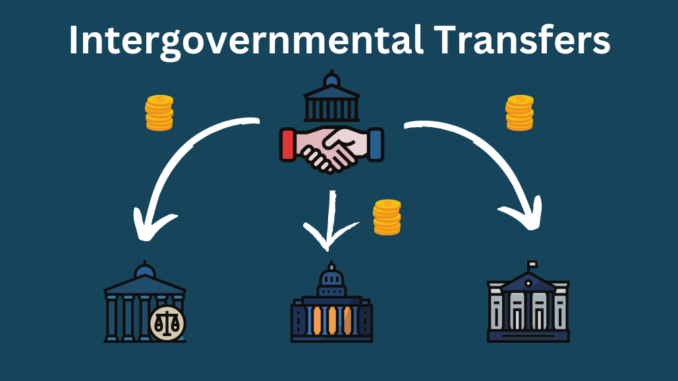
A recent study by Teresa Ter-Minassian and Andrés Muñoz Miranda published by the Inter-American Development Bank aims at providing an overview of international experiences with the design and reform of intergovernmental transfers, especially in large federations, with a view to devising viable options for reforming the transfer system in Mexico.
The design of intergovernmental transfers is probably the most complex issue in fiscal federalism for a number of reasons:
- It involves decisions about the allocation of limited fiscal resources among competing units of government. These decisions reflect the whole history of intergovernmental relations in the country, evolving political power balances, and a range of institutional and economic factors that vary across countries and over time, such as the federal or unitary nature of government, and the extent of regional and local disparities.
- It is inextricably linked with other key features of the system of intergovernmental fiscal relations, such as revenue and expenditure assignments, and borrowing controls.
- It involves trade-offs between sometimes conflicting objectives (e.g., devolution vs equalization; subnational autonomy vs the pursuit of national objectives; and predictability vs flexibility for both grantor and recipient governments). Different types of transfer are best suited to pursue one or the other objective, and it is crucial that the transfers do not work at cross purposes, but rather that they ensure a desired balance among the objectives.
- It needs to reflect capacity constraints, which influence, in particular, the trade-offs between complexity on the one hand, and simplicity and transparency on the other hand.
For these reasons, there is no optimal transfer design that is applicable to all countries and at all times. However, the analysis of a range of international experiences helps elucidate the trade-offs mentioned above and how they differ in different economic, institutional, and sociopolitical contexts. This in turn can help policymakers decide what would work best in their own country’s circumstances.
The study by Teresa Ter-Minassian and Andrés Muñoz Miranda is divided into three sections:
Section 1 distills some lessons from international experiences, some of which are discussed in more detail in the Country Appendix, which covers seven large federations, namely Australia, Canada, Germany, and the United States among advanced economies, and Argentina, Brazil, and India among emerging ones. These countries have been chosen because they differ significantly not only in the level of development, but also in the history and characteristics of their intergovernmental relations. Thus, these differences pro vide a menu of potential options for reforms of an intergovernmental transfer system. The main conclusions from this analysis can be summarized as follows:
- A failure to assign appropriate own-revenue sources 1 to subnational governments (henceforth SNGs) contributes to an excessive transfer dependence on their part and undermines both political accountability and fiscal responsibility.
- Different types of intergovernmental transfers are best suited to fulfil l different objectives. Therefore, a well-balanced transfer system should include a mix of revenue-sharing mechanisms and special-purpose grants. However, it is important to avoid pulverizing resources by spreading them too thin among many different transfers with competing objectives.
- Formula-based grant s provide predictability of resources for recipient governments, but they impart some rigidity to the budgets of granting governments. This trade-off can be alleviated through the use of sunset clauses and periodic review clauses for the grants. The formulas should be as simple and transparent as possible, utilizing indicators that are easily available and updatable, not subject to manipulations by either granting or recipient governments, and closely linked to the objectives of the specific grant.
- Since most countries distribute part of their transfers on the basis of where they originate, it is important to introduce some equalization elements in any transfer system , to avoid exacerbating regional inequalities. Equalization systems vary significantly across countries in both complexity and redistributive effectiveness.
Section 2 of the paper presents a summary overview of the current Mexican system and a number of commentaries on how it fares in relation to the lessons from international experiences discussed in Section 1. The main conclusions of Section 2 can be briefly summarized as follows:
- The overall context of intergovernmental fiscal relations in Mexico, despite some progress in recent years, continues to suffer from some significant weaknesses. In particular, these weaknesses include overlap in spending responsibility among the different levels of government; large vertical imbalance due to the paucity of own sources of revenue for the states; and a still relatively soft subnational budget constraint.
- The system of federal transfers to the states is excessively fragmented, a fact that blunts the effectiveness of individual transfer mechanisms and absorbs a lot of resources in administering them.
- A positive feature of the revenue-sharing programs (called participaciones) is the fact that both their amounts and their distribution are based on standing, clearly specified formulas. However, the inclusion in the revenue-sharing base of some 80 percent of federal oil revenues exposes the state budgets to the typically high volatility of these revenues.
- In contrast to the participaciones, a substantial part of earmarked transfers is determined and distributed among the states on the basis of only general criteria or ad-hoc negotiations between the federal and the state governments. This is obviously the case for the special-purpose grants (recursos federales reasignados por convenios, or RFR), but this is also the case for some of the general-purpose grants (a portaciones). This reduces their transparency and predictability for the state governments, and it softens the states’ budget constraint.
- Regarding the equalizing power of the transfer system, the distributions among the states of participaciones and especially of a portaciones are less unequal than that of ingresos propios (own revenue). However, the distribution of convenios is even more unequal than that of ingresos propios.
In the light of this analysis, Section 3 explores various possible options for reform of the system in Mexico, aiming to correct or at least reduce some of the above-mentioned shortcomings. A number of different reform options were analyzed by simulating their impact on transfers received by individual states (see the Methodological Appendix) . With a view to minimizing political resistance to the reforms, the simulations were conducted on the assumptions that the reforms would only apply “on the margin,” that is, to the year-to-year growth in intergovernmental transfers. This would substantially reduce short-term gains and losses for individual states.
To address the first shortcoming of the current system (low own revenues of the states), the simulations included a reform granting the states the power to levy a 10 percent surcharge on the federal income tax. The reforms of the transfer system involved merging different categories of Participaciones, Aportaciones, and Convenios into single transfers distributed as follows: in the case of Participaciones, partly on an origin basis and partly on an equalization basis; and in the case of Aportaciones and Convenios, on the basis of relative population and an indice de marginacion (index of unsatisfied basic needs). The main results of the simulations can be summarized as follows:
- The surcharge on the federal income tax would imply a rather modest increase in the overall income tax burden but an increase in total states’ own revenues by more than 50 percent. The increase would, however, vary widely across states, ranging from over 100 percent in Nuevo León to as little as 10 percent in Oaxaca. This would increase disparities in the states’ own revenues, making even more compelling the case for including equalization criteria in the horizontal distribution formulas for intergovernmental transfers.
- The reforms would drastically reduce the fragmentation of the transfer system and the degree to which grants mechanisms are discretionary, thereby hardening the states’ budget constraint.
- Very few states would experience some (very small) overall revenue losses, a fact that bodes well for the political feasibility of the reforms.
- The reforms would marginally reduce the equalization power of the revenue-sharing programs, but significantly increase that of both general-purpose grants and special-purpose grants.
Read the entire paper on the Inter-American Development Bank website:
Ter-Minassian, T., & Muñoz Miranda, A. (2022). Options for a reform of the Mexican Intergovernmental Transfer System in light of international experiences. https://doi.org/10.18235/0004217



